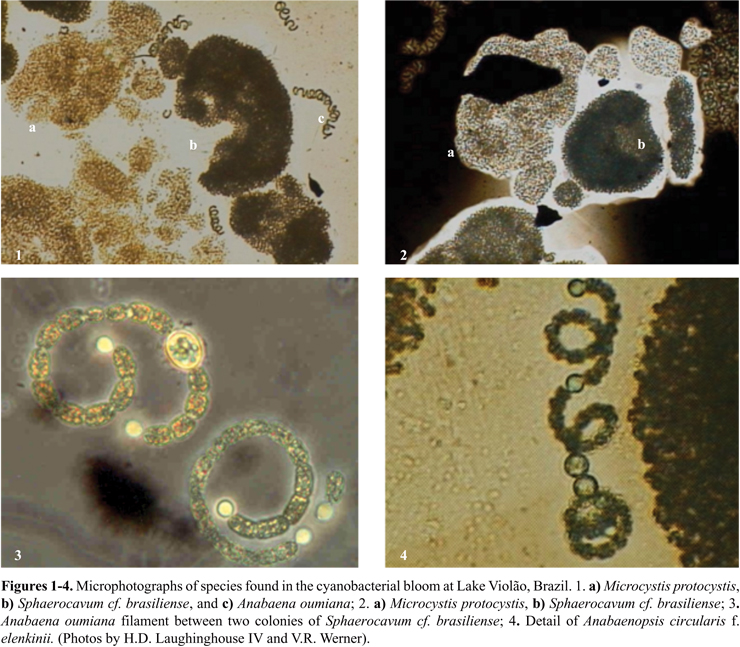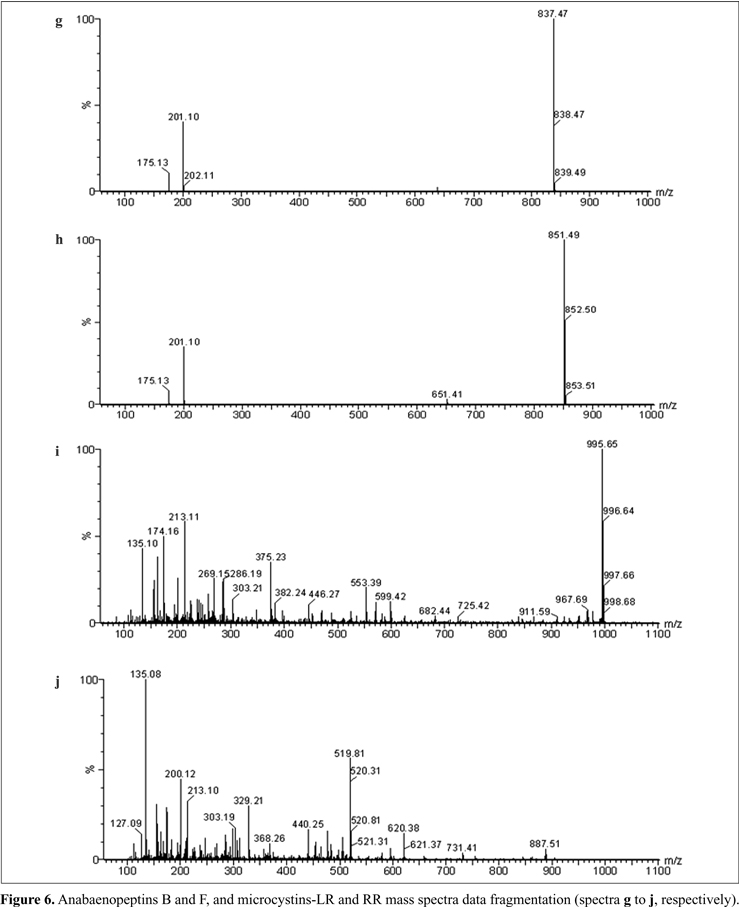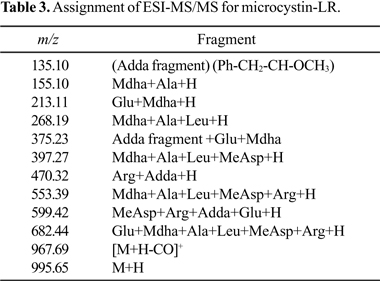Reports of cyanobacterial blooms developing worldwide have considerably increased, and, in most cases, the predominant toxins are microcystins. The present study reports a cyanobacterial bloom in Lake Violão, Torres, Rio Grande do Sul State, in January 2005. Samples collected on January 13, 2005, were submitted to taxonomical, toxicological, and chemical studies. The taxonomical analysis showed many different species of cyanobacteria, and that Microcystis protocystis and Sphaerocavum cf. brasiliense were dominant. Besides these, Microcystis panniformis, Anabaena oumiana,Cylindrospermopsis raciborskii, and Anabaenopsis elenkinii f. circularis were also present. The toxicity of the bloom was confirmed through intraperitoneal tests in mice, and chemical analyses of bloom extracts showed that the major substance was anabaenopeptin F, followed by anabaenopeptin B, microcystin-LR, and microcystin-RR.
Cyanobacteria; blooms; anabaenopeptins; microcystins








